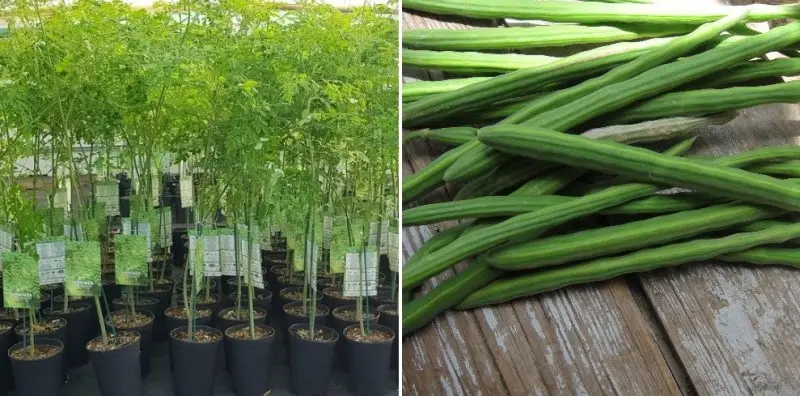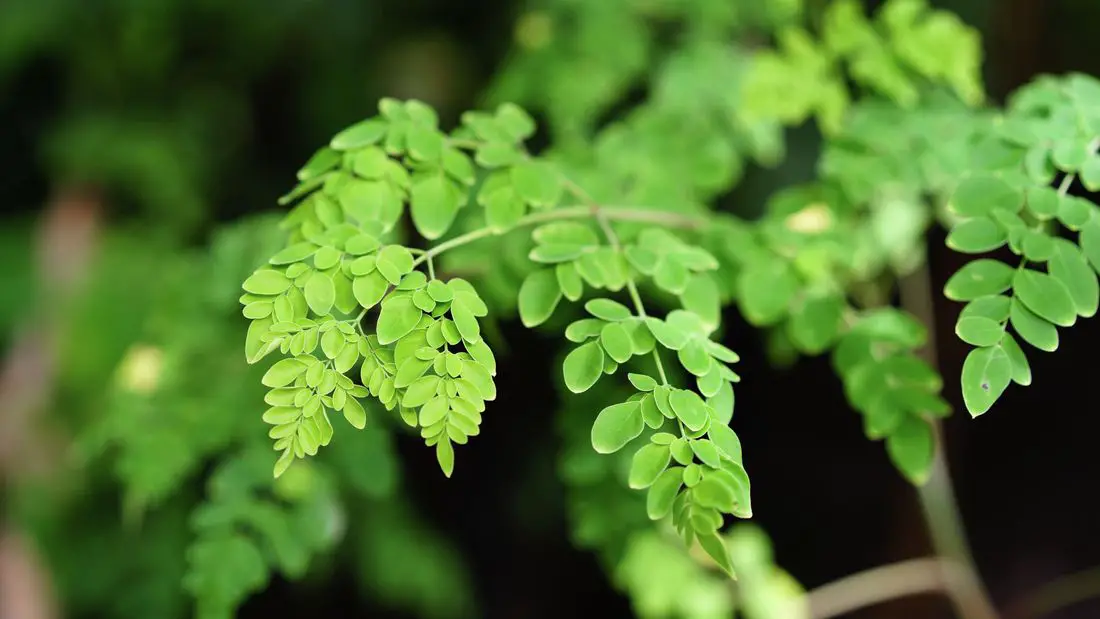Growing moringa can be a rewarding experience. Not only are these trees drought-resistant once established, but they’re also packed with inflammation-fighting nutrients.
Moringa is native to tropical and subtropical climates. Gardeners in cooler regions can grow them indoors in containers or year-round greenhouses.
Germination
Moringa is an easy-to-grow plant, which can be grown from seeds or cuttings. All it requires is some warmth, some water and fertilizer for it to thrive. Moringa’s leaves, seeds and fruit pods contain antioxidants, fiber, iron, vitamins A, C and B as well as other beneficial nutrients which aid digestion, sleep quality and reduce inflammation within the body.
Moringa trees can grow to 30 feet tall with stunning gray bark. They make great landscaping trees for gardens, hedgerows, and living fences; not only do they provide shade to various crops like yam and pole beans but they provide food as well.
To propagate a moringa tree, take a cutting that measures at least 1 inch across and 6 feet long. Cut away most of the foliage before placing in a pot with soil mixture and water. Within one to two weeks, roots should begin to appear from this cut as new shoots emerge when you push them out of their pot.
If your moringa tree is healthy, pruning it regularly to maintain an appropriate size and shape is recommended. This is especially crucial if you plan on selling moringa to the public.
Moringa trees stand out in that they grow slender with one main trunk and branches. You can prune your moringa tree to any height you like, and it usually returns to green tops and sprouts new branches within 35-60 days.
Once you own a moringa tree, pruning it annually or every few years is recommended to maintain its slender shape and allow you to harvest more leaves.
If you are growing moringa for food, the leaves can be added to salads and other dishes. You could also dry the leaves and use them in powder form that can be added to drinks or cooked foods.
Moringa trees can be planted in a wide range of soil types and conditions, including drought and flooding. Because they require good drainage and prefer warm climates, it is recommended that you mulch around their base with soil for additional protection against root rot in soggy conditions.
Soil
Moringa plants are incredibly easy to cultivate from seeds or cuttings and can be grown in a variety of soil types. They do best in loose loam or sandy soils with good drainage, though they will thrive even in poorer soils when an annual layer of compost is applied around the plant.
Moringa seeds take approximately three to fourteen days for germination. They can be planted directly in the ground or in a container; ideal soil temperature for sprouting is 70-90 degrees Fahrenheit. Once sprouting has occurred – usually six or eight weeks after sowing – transplant the seedlings into an appropriate environment for maintenance and growth.
Moringa should be planted at a depth of around one inch. They thrive best in garden beds where their roots can be protected from cold temperatures and harsh winds.
As with any plant, a little extra fertilizer can go a long way. Add about 300 grams of commercial nitrogen fertilizer per tree when planting and then apply 1-2 kg of well-rotted farmyard manure or compost annually to promote optimal growth and yields.
Once Moringa plants become established, they rarely need watering unless there is persistent wilting. They are capable of withstanding drought conditions and will bloom and produce pods when enough rain falls.
In areas with dry climates, it is beneficial to irrigate young trees after transplanting for the first two months. Doing this will help them develop strong and healthy root systems.
Before planting, cultivate the soil thoroughly to suppress weed growth. If a weed barrier isn’t possible, mulch around each plant’s base with straw or plastic.
When planting two Moringa trees, keep their distance apart to a minimum of 3 meters. This provides enough room for their roots to spread and develop properly.
Moringa roots have a deep taproot system and require plenty of room to expand into soil or potting mix. Furthermore, they need plenty of sunlight for proper growth; Moringa thrives best when kept in an area with at least 6-7 hours of daily illumination.

Light
If you don’t have access to a garden or live in an apartment, growing moringa is possible in containers. Choose a pot that measures 20 inches or larger with adequate drainage; seeds or stem cuttings can be used. Make sure the plant receives at least 5 hours of direct sunlight daily for best results.
Mulch the pot to retain moisture and warmth. Mulch can be made from coconut husk, dried leaves, straw or cardboard.
Once the seeds sprout, it’s essential to water them regularly in order to promote growth. Make sure the plants get just enough moisture but not so much that the soil becomes soggy.
You can also spray the leaves with neem oil to protect them from pests. Furthermore, this essential oil has anti-fungal properties which help the plant resist diseases.
Moringa is an adaptable plant, capable of withstanding a range of climates. It can thrive outdoors, inside a greenhouse, or indoors in your garden.
If you’re growing your moringa tree indoors, setting up a grow light fixture is recommended. A grow light will provide the plant with sufficient lighting to thrive.
When cultivating moringa indoors, it’s wise to prune your tree regularly. Doing so encourages leaf growth and keeps the plant healthy. Pruning also encourages more branching which in turn increases harvest of leaves, flowers, and pods.
Once your moringa tree reaches mature height, it will produce over 1,600 seed pods annually. These edible gems provide essential vitamins C, A, calcium and potassium.
These seeds can be enjoyed as a nutritious food source or ground into powder and added to salads, smoothies, soups and other meals. Furthermore, the plant’s seeds have medicinal uses.
Moringa is an incredibly nutrient-rich food, easily added to your diet for its antioxidants, iron, protein, vitamins, minerals and anti-inflammatory compounds. It has become a go-to choice for those looking to improve their health; often referred to as the “miracle tree” due to its numerous nutritional properties and capacity to treat malnutrition.
Water
Moringa can be grown in water, making it an ideal option for those wanting to grow the tree indoors or in a greenhouse. It thrives in humid environments and has developed roots that make it drought resistant; however, regular watering will be necessary in order for the plant to stay healthy and produce fruit.
Watering Moringa effectively requires giving it a good, deep soak every few days, but can also be drip-irrigated onto the soil with a garden hose or sprinkler. Doing this keeps the soil well hydrated and encourages root development more quickly.
It is essential to regularly monitor the moisture level in the soil and water the tree when necessary. Doing this will guarantee that its roots receive plenty of water, even during dry weather conditions.
Once the tree has begun to sprout, you must regularly prune it back in order to prevent it from growing too tall and overrun with branches. Doing this makes harvesting leaves, flowers, pods, and seeds harder.
When pruning a tree, it is best to begin at the base. Remove dead leaves and damaged branches to give your tree a strong root system and abundant harvest of leaves, flowers, and seeds.
Another method for growing moringa is through propagating it from cuttings. This approach may be particularly advantageous if your area has poor soil.
To propagate a plant, you’ll need a stem or branch from the mother plant with an approximate diameter of one inch and length of six feet. Dig a hole at least 3 feet wide and 3 feet deep and amend the soil to make it moist. Insert the cut stem into this hole, filling it with sand, composted manure and water.
Once the cut has been planted in soil, water it regularly for around a week or so to encourage root development. After some time has elapsed, you should start seeing new shoots emerging from the cut.
Moringa can also be grown in containers, but make sure the pot size is large enough for the tap root not to curl around the base of the pot. Otherwise, young plants may experience root damage if kept too closely to pots.

